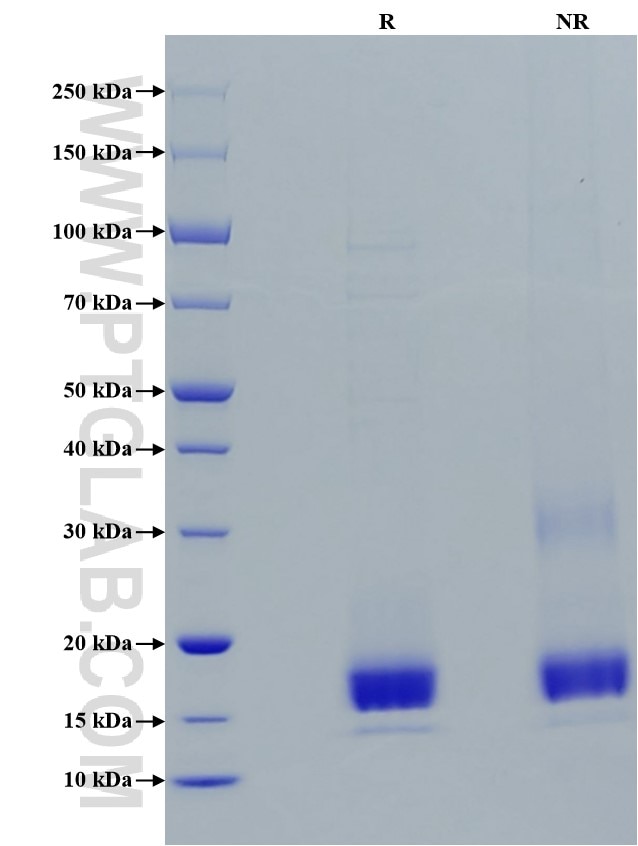Recombinant Human TIGIT protein (His Tag)
Species
Human
Purity
>95 %, SDS-PAGE
Tag
His Tag
Activity
EC50: 100-400 ng/mL
Cat no : Eg0749
Validation Data Gallery
Product Information
| Purity | >95 %, SDS-PAGE |
| Endotoxin | <0.1 EU/μg protein, LAL method |
| Activity |
Immobilized Human TIGIT (His tag) at 2 μg/mL (100 μL/well) can bind Human CD155 (hFc tag, Myc tag, His tag) with a linear range of 100-400 ng/mL. |
| Expression | HEK293-derived Human TIGIT protein Met22-Pro141 (Accession# Q495A1-1) with a His tag at the C-terminus. |
| GeneID | 201633 |
| Accession | Q495A1-1 |
| PredictedSize | 14.1 kDa |
| SDS-PAGE | 15-18 kDa, reducing (R) conditions |
| Formulation | Lyophilized from 0.22 μm filtered solution in PBS, pH 7.4. Normally 5% trehalose and 5% mannitol are added as protectants before lyophilization. |
| Reconstitution | Briefly centrifuge the tube before opening. Reconstitute at 0.1-0.5 mg/mL in sterile water. |
| Storage Conditions |
It is recommended that the protein be aliquoted for optimal storage. Avoid repeated freeze-thaw cycles.
|
| Shipping | The product is shipped at ambient temperature. Upon receipt, store it immediately at the recommended temperature. |
Background
T cell immunoreceptor with Ig and ITIM domains(TIGIT), also named as V-set and immunoglobulin domain-containing protein 9 (VSIG9), V-set and transmembrane do-maincontaining protein 3 (VSTM3) and Washington University cell adhesion molecule (WUCAM), is a co-inhibitory molecule belonging to the immunoglobulin superfamily that was first discovered in 2009. It consists of an extracellular immunoglobulin variable (IgV) domain, a type I transmembrane domain and an intracellular domain with an immunoreceptor tyrosine-based inhibitory motif (ITIM) and an immunoglobulin tail tyrosine (ITT)-like motif. TIGIT is an inhibitory receptor expressed on several types of lymphocytes. Efficacy of antibody blockade of TIGIT in cancer immunotherapy is currently widely being investigated in both pre-clinical and clinical studies. In multiple cancers TIGIT is expressed on tumor-infiltrating cytotoxic T cells, helper T cells, regulatory T cells and NK cells, and its main ligand CD155 is expressed on tumor-infiltrating myeloid cells and upregulated on cancer cells, which contributes to local suppression of immune-surveillance.
References:
1.Qiu D, et al. (2022) Clin Exp Med Jun;23(2):165-174. 2.Boles KS, et al. (2009) Eur J Immunol 39(3):695–703. 3.Levin SD, et al. (2011) Eur J Immunol 41(4):902–15. 4.Harjunpää H, et al. (2020) Clin Exp Immunol 200(2):108–19. 5.Jin S, et al. (2022) Front. Oncol. Dec 20;12:1091782. 6.Ge Z, et al. (2021) Front. Immunol. Jul 22;12:699895.


